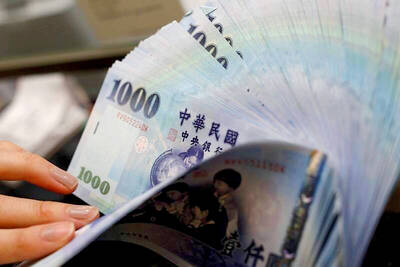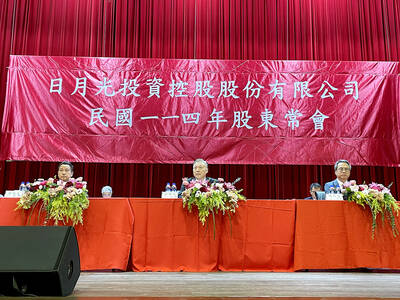Celaya, an industrial city in the heart of Mexico, now has a Japanese language class where the teacher uses honorifics, addressing her students as “Felipe-san,” or “Christian-san.”
Across town, a hotel installed a special satellite dish on its rooftop to capture a Japanese TV channel, while receptionists greet visitors with: konnichiwa (hello).
A central road is named Mexico-Japan Avenue and at the city’s entrance a giant billboard reads: “Celaya is a good choice. Welcome Honda.”
The sign might as well have said: “Welcome, Japan,” as Celaya and other cities in Mexico’s Guanajuato State are greeting with open arms the arrival of Japanese carmakers Honda Motor Co Ltd and Mazda Corp, dozens of parts suppliers and legions of expats.
“It is changing the face of Celaya,” Fernando Vera Noble, director of the city’s economic development department, told reporters in his office.
Guanajuato is becoming a major hub for the growing number of foreign car makers that are flocking to Mexico for its relatively low wages, proximity to the massive US market and free-trade deals with numerous nations.
Mexico is now the world’s eighth-biggest car producer and fourth exporter, and within the country, Guanajuato stands out as a prime spot for Japanese firms.
The Asian country is Guanajuato’s biggest investor, pouring US$4 billion into the state and creating 25,000 jobs over the past seven years, helping to fuel a rising middle class by paying the highest manufacturing wages, according to official figures.
“The Japanese company boom was sparked in 2011 with the Honda and Mazda announcements,” Guanajuato State Secretary for Economic Development Hector Lopez Santillana said.
On Feb. 21, Mexican President Enrique Pena Nieto inaugurated the US$800 million Honda factory in Celaya, a city of half a million people, and the car company is also building a US$470 million transmissions plant.
A week later, Pena Nieto launched Mazda’s US$770 million factory in Salamanca, a half-hour drive west of Celaya.
With about 1,500 Japanese now living in Guanajuato and the state government expecting 5,000 by 2016, many locals are trying to learn the ways of their visitors.
Fabiola Gorostieta Arevalo opened the Jikokensan Japanese Academy with her sister, Maria Guadalupe, in September last year in a three-floor white house filled with pictures of Mount Fuji.
They have 25 students, ranging from children to university students, Honda workers and others interested in Japanese culture or looking to pad their resumes.
“The opening of the factory will bring more interest in learning the language because people already see Japanese people in the supermarket, in the street, so they want to be closer to Japanese society,” Fabiola said.
“I was always interested in the culture. Unfortunately, there used to be few possibilities to find a school to learn the language,” computer specialist Christian Duval, 32, said during one of the classes.
Felipe Rivera, a 26-year-old Honda assembly line worker, said learning the language could help him move up in his career.
“I’m interested in learning their way of thinking. At work, you realize that they think differently than Latin Americans. Maybe by understanding their idiosyncrasies, it can help me work better with them,” he said.
The mix of cultures has brought out old cliches about the Japanese obsession with punctuality versus Mexican tardiness.
“There’s differences between Japan and Mexico,” said Tomokazu Matsushita, the 34-year-old manager of subsidiary Honda Trading, who moved to the country seven months ago with his wife and children.
“In Mexico, how can I say this ... to buy something and install something, it takes a little bit of time,” he said, stressing that he has been too busy working to see much more of the country.
Lopez Santillana said the two cultures are learning from each other.
“In Mexico, we use terms such as manana [tomorrow] and ahorita [right now]. We are getting used to the fact that [for the Japanese] ‘tomorrow’ means the first work hour of the next day and that ahorita really means right now,” he said.
Mexicans also have advice for the Japanese.
“We are teaching them to be flexible,” Lopez Santillana said.
The services and tourism industry are adapting and growing, with 22 hotels under construction, more Japanese restaurants opening and plans to build a school for Japanese children.
The 126-room Casa Inn Hotel in Celaya has become the second home of visiting Honda executives. The hotel’s 99 employees have taken Japanese lessons, the restaurant’s menu is in Japanese with dishes like Udon noodle soup and guests can watch Japanese public broadcaster NHK.
“The whole city is in great communion with the Japanese,” Casa Inn rooms manager Federico Mendoza Schuster said. “We know that their presence is important and beneficial to our city.”

Merida Industry Co (美利達) has seen signs of recovery in the US and European markets this year, as customers are gradually depleting their inventories, the bicycle maker told shareholders yesterday. Given robust growth in new orders at its Taiwanese factory, coupled with its subsidiaries’ improving performance, Merida said it remains confident about the bicycle market’s prospects and expects steady growth in its core business this year. CAUTION ON CHINA However, the company must handle the Chinese market with great caution, as sales of road bikes there have declined significantly, affecting its revenue and profitability, Merida said in a statement, adding that it would

RISING: Strong exports, and life insurance companies’ efforts to manage currency risks indicates the NT dollar would eventually pass the 29 level, an expert said The New Taiwan dollar yesterday rallied to its strongest in three years amid inflows to the nation’s stock market and broad-based weakness in the US dollar. Exporter sales of the US currency and a repatriation of funds from local asset managers also played a role, said two traders, who asked not to be identified as they were not authorized to speak publicly. State-owned banks were seen buying the greenback yesterday, but only at a moderate scale, the traders said. The local currency gained 0.77 percent, outperforming almost all of its Asian peers, to close at NT$29.165 per US dollar in Taipei trading yesterday. The

RECORD LOW: Global firms’ increased inventories, tariff disputes not yet impacting Taiwan and new graduates not yet entering the market contributed to the decrease Taiwan’s unemployment rate last month dropped to 3.3 percent, the lowest for the month in 25 years, as strong exports and resilient domestic demand boosted hiring across various sectors, the Directorate-General of Budget, Accounting and Statistics (DGBAS) said yesterday. After seasonal adjustments, the jobless rate eased to 3.34 percent, the best performance in 24 years, suggesting a stable labor market, although a mild increase is expected with the graduation season from this month through August, the statistics agency said. “Potential shocks from tariff disputes between the US and China have yet to affect Taiwan’s job market,” Census Department Deputy Director Tan Wen-ling

UNCERTAINTIES: The world’s biggest chip packager and tester is closely monitoring the US’ tariff policy before making any capacity adjustments, a company official said ASE Technology Holding Inc (日月光投控), the world’s biggest chip packager and tester, yesterday said it is cautiously evaluating new advanced packaging capacity expansion in the US in response to customers’ requests amid uncertainties about the US’ tariff policy. Compared with its semiconductor peers, ASE has been relatively prudent about building new capacity in the US. However, the company is adjusting its global manufacturing footprint expansion after US President Donald Trump announced “reciprocal” tariffs in April, and new import duties targeting semiconductors and other items that are vital to national security. ASE subsidiary Siliconware Precision Industries Co (SPIL, 矽品精密) is participating in Nvidia